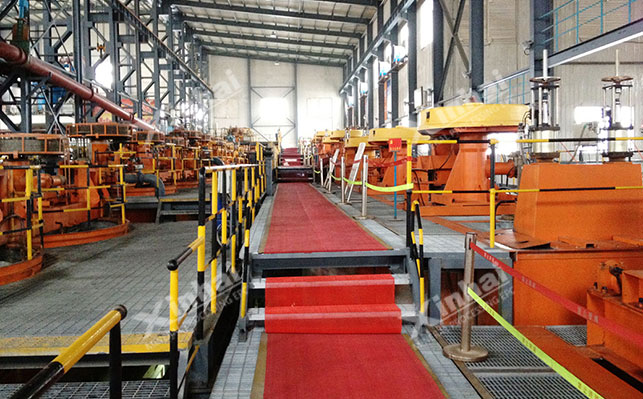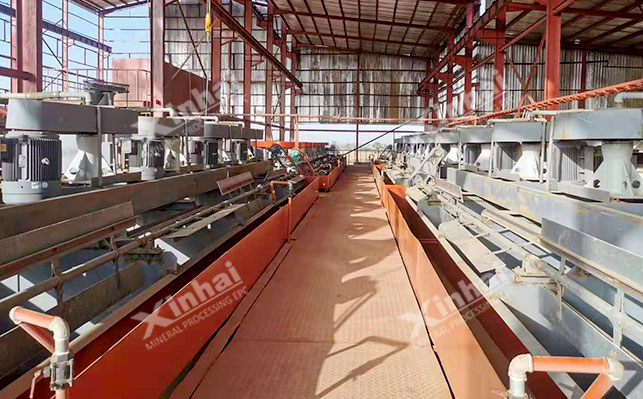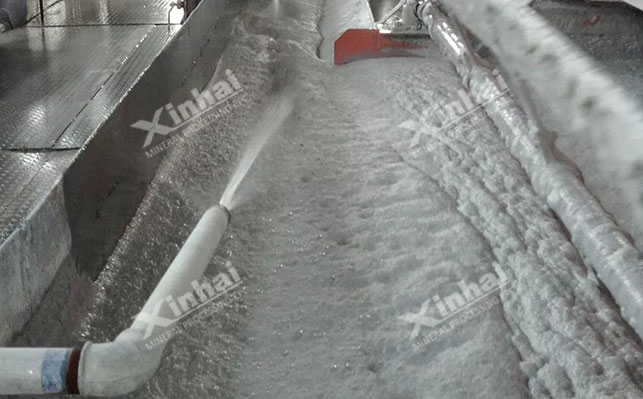
15311826613
Click to add WeChatAccording to the nature of the ore, copper ore can generally be divided into two types: copper sulfide ore and copper oxide ore. The former is the main mineral for obtaining copper resources. Due to the continuous increase in mining intensity As a result, copper sulfide ore has been gradually depleted, so copper oxide ore has become an important mining target for developers. Copper oxide is an inorganic substance, a black oxide of copper. In nature, the copper oxides with recycling value mainly include: malachite, azurite, cuprite, hydrocholine, bile alum, copper chloride Alum etc. This type of copper mine has the characteristics of many types of ores, complex properties, easy to sludge, and fine grain size .

Since copper itself has good hydrophilicity, during the mineral processing process, Flotation method is often used for separation. At present, the common copper oxide ore flotation methods are: sulfide flotation method, fatty acid flotation method, amine flotation, emulsion flotation and integrator-neutral oil flotation.
The copper oxide sulfide flotation method can be divided into two categories: conventional sulfide flotation method and hydrothermal sulfide flotation method. In the former, copper oxide minerals are first sulfurized with sodium sulfide or other sulfurizing agents (such as sodium hydrosulfide), and then high-grade xanthate is used as a collector for flotation. During sulfidation, the the lower the pH value of the slurry, the sulfidation will proceed faster. However, sulfiding agents such as sodium sulfide are easy to oxidize and have a short action time. Therefore, flotation oxidation is used when using sulfidation method. When working with copper ores, it is recommended to add the sulfiding agent step by step. The copper oxide minerals processed by the conventional sulfide flotation method are mainly copper carbonates, such as malachite, azurite, etc., which can also be used to flotate cuprite.
The hydrothermal sulfide flotation method chemically reacts between sulfur and copper oxide minerals under hot pressure conditions to generate stable and easy-to-select artificial copper sulfide minerals. And it is recovered by flotation of copper sulfide in warm water, which is characterized by strengthening the pretreatment-pre-sulfidation process of the ore. The working principle of this flotation method is that when the temperature of the slurry with the addition of sulfiding agent rises to a certain level, the elemental sulfur generates S2- and enters the solution due to its own oxidation and reduction. strong>;When S2- meets copper oxide minerals, a chemical reaction occurs to generate copper sulfide minerals. During the hot water sulfurization process, sulfurization temperature, ore particle size, sulfur content and sulfurization time all have varying degrees of impact on the conversion of copper oxide. This flotation method has high temperature requirements, high fuel consumption, and long vulcanization time. Therefore, attention needs to be paid to lowering the vulcanization temperature and shortening the vulcanization time during the production process.

Fat acid flotation method is also calleddirect flotation method When using fatty acids and their soap as collectors for flotation, gangue inhibitor water is usually added. Glass, phosphate and pulp conditioner sodium carbonate, etc.
Fatty acids and their soaps can flotate malachite and azurite very well. The test results of malachite flotation using fatty acids with different hydrocarbon chains show that as long as the hydrocarbon chain is long enough, the fatty acids have no effect on malachite. The collection ability of the agent is quite strong. Within a certain range, the collection ability of the agent is proportional to the dosage.
The fatty acid flotation method is only applicable toThe gangue is not carbonate type Oxide copper oreWhen the gangue contains a large amount of iron and manganese minerals, its indicators will deteriorate, and the slime will also invalidate the fatty acids.
Using amines as collectors to flotate non-ferrous metal oxide ores (copper, lead, zinc oxide ores) ) is a commonly used flotation method, suitable for processing malachite, azurite, atamanite, etc.
Amines are effective collectors for copper oxide ores, but their selectivity is poor and they also have a collection effect on many gangues, so the amine method often requires desliming in advance. However, for argillaceous copper oxide ores, desliming in advance will cause copper loss, so the key to the amine method is how to find effective inhibitors of gangue. Current effective inhibitors of gangue include seaweed powder, lignosulfonate or cellulose lignosulfonate, polyacrylic acid, etc.

The copper oxide minerals are first sulfurized, and then copper is added The compounding agent creates a stable lipophilic mineral surface, and then the neutral oil emulsion is used to cover the mineral surface, creating a highly hydrophobic and floatable state, and the mineral can firmly adhere to the air bubbles and float. The essence of the emulsion flotation method includes three aspects:
■ Using selective organic copper complexing compounds to form a stable lipophilic film on the mineral surface. The copper complexing agent includes benzotriazole. Toluyl triazole, fluid base benzimidazole, diphenylguanidine, etc.;
■ Add non-polar oil emulsion to improve the adhesion between minerals and bubbles; non-polar oil emulsifiers include Gasoline, kerosene and diesel, etc.;
■ Use selective inhibitors such as acrylic polymers and sodium silicate.
For difficult-to-select copper oxide ores (such as chrysocolla, etc.), several flotation methods mentioned above are used. The selection methods are not very selective and the recovery rate is not high, so the flotation method of integrating agent and neutral oil can be considered.
This method refers to the use of a certain integrating agent and neutral oil to form a collector. This not only has high selectivity and collection effect, but also ensures high sorting index. At the same time, the drug consumption is reduced, and the integrator also has a selective inhibitory effect.
Currently, the integrators used include octyl-substituted basic dye malachite green, potassium octyloxyfatty acid, benzotriazole and neutral oil emulsifier, N-substituted imine diethyl acid salts, condensates of polyamines and organic halides, etc.
The above introduces the characteristics of copper oxide and the flotation method of copper oxide. In actual mineral processing plants, different copper oxide minerals have different ore properties, so the flotation processes selected also have their own advantages. You cannot blindly choose, but conduct mineral processing tests first, and customize reasonable process flows and complete sets of copper mineral processing equipment through experimental analysis , in order to achieve a double harvest of economic benefits and selection indicators.